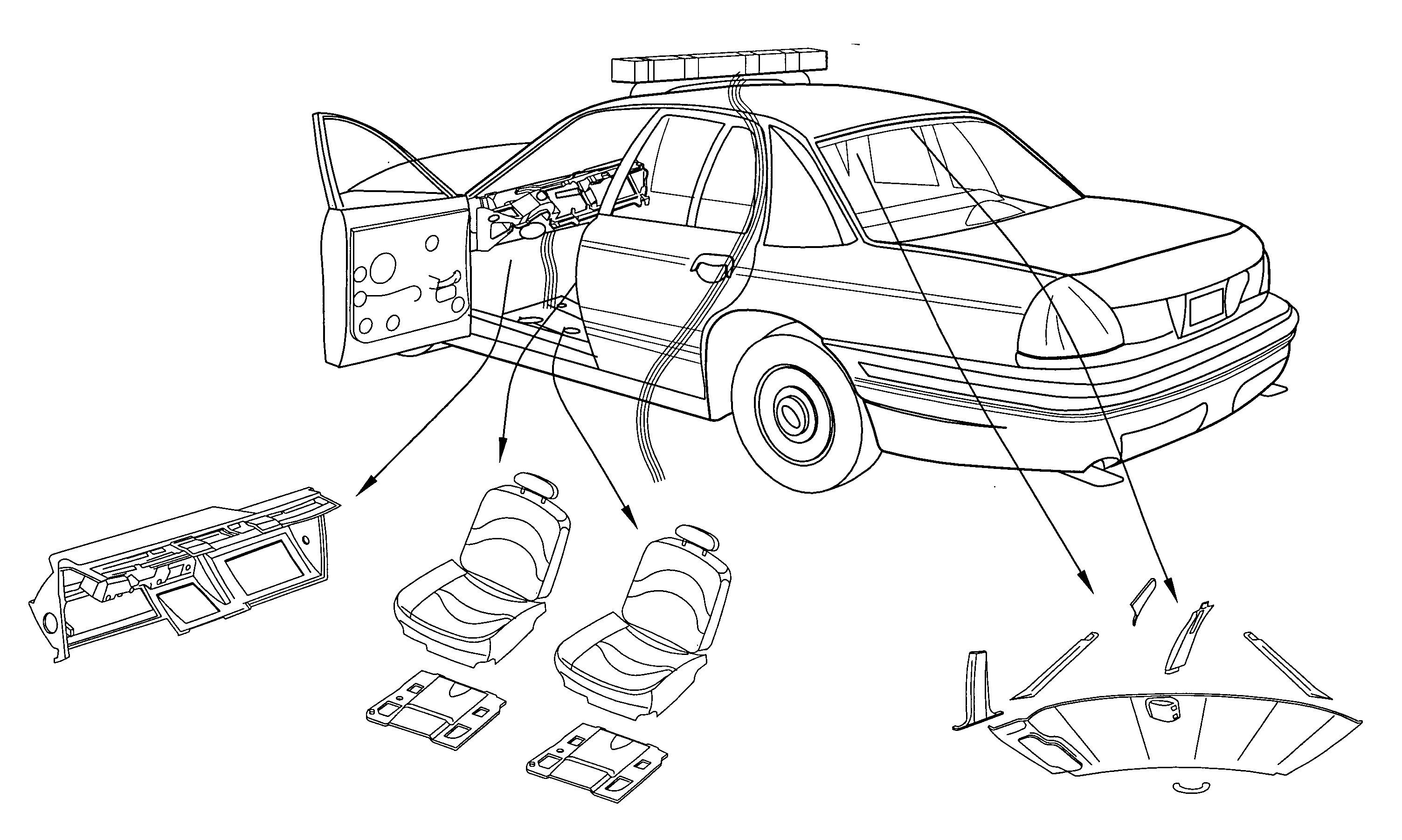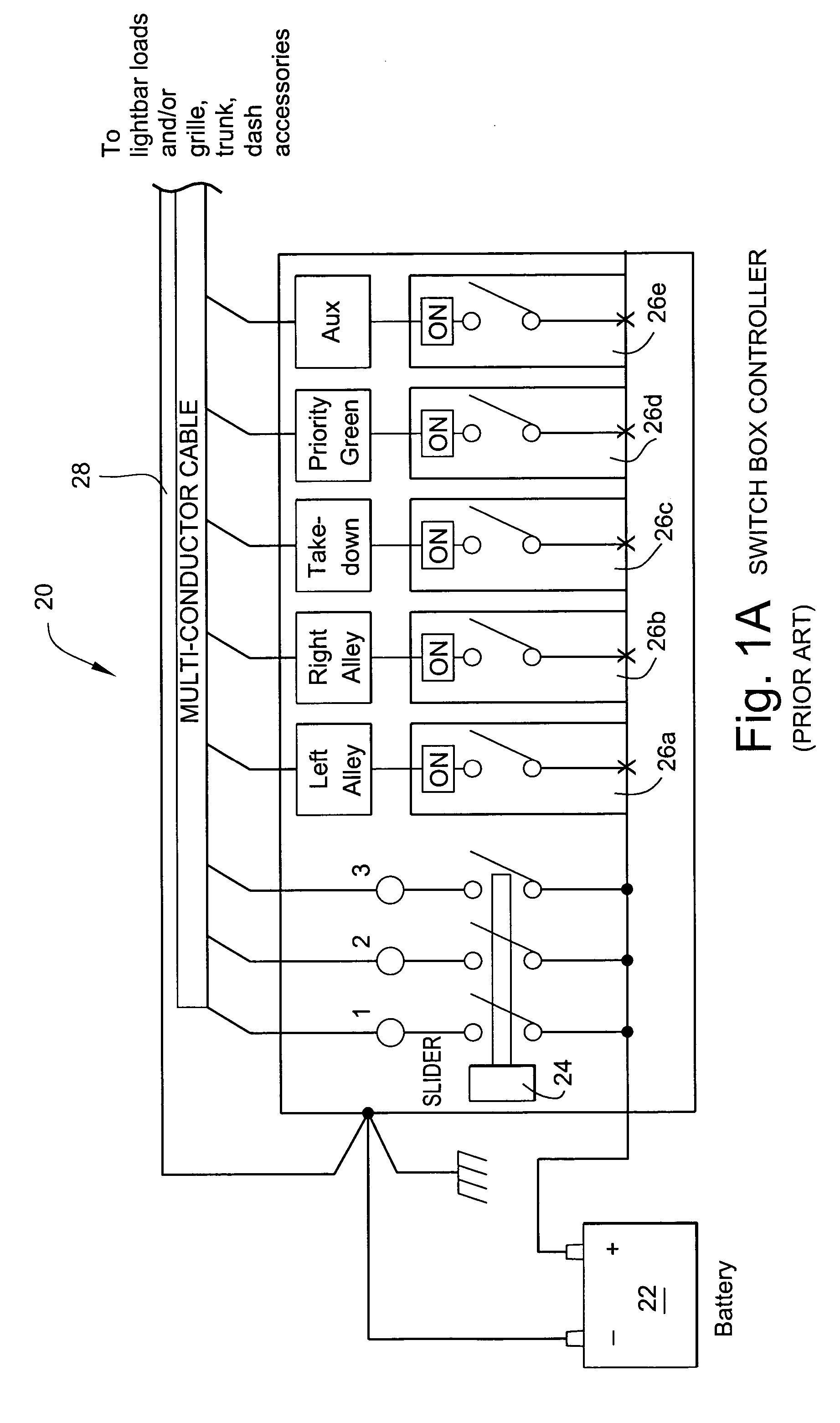Method and apparatus for communicating control and other information over a power bus
- Summary
- Abstract
- Description
- Claims
- Application Information
AI Technical Summary
Benefits of technology
Problems solved by technology
Method used
Image
Examples
Embodiment Construction
[0030]FIG. 3 shows an example police vehicle using the current modulated load communication technique described herein to communicate control signals between a dash or console mounted controller and a roof-mounted light bar. In the example shown, the multi-conductor cable power control bundle 28 is eliminated as no longer being needed or required. Instead, control signals are communicated via the main power bus that connects the battery to the light bar. Additional control signals may be communicated via the same bus to other devices located at various points within the vehicle. For example, a rear-mounted warning lamp, front headlight flashers, etc. may all be controlled via the same control mechanism and communications path over the main power bus of the vehicle. The cabling shown can be factor-installed single or two-conductor power cables, and the data transmitter connection may be a two-conductor connection to the local power bus as is conventional.
[0031] In the FIG. 3 arrange...
PUM
 Login to View More
Login to View More Abstract
Description
Claims
Application Information
 Login to View More
Login to View More - R&D
- Intellectual Property
- Life Sciences
- Materials
- Tech Scout
- Unparalleled Data Quality
- Higher Quality Content
- 60% Fewer Hallucinations
Browse by: Latest US Patents, China's latest patents, Technical Efficacy Thesaurus, Application Domain, Technology Topic, Popular Technical Reports.
© 2025 PatSnap. All rights reserved.Legal|Privacy policy|Modern Slavery Act Transparency Statement|Sitemap|About US| Contact US: help@patsnap.com



